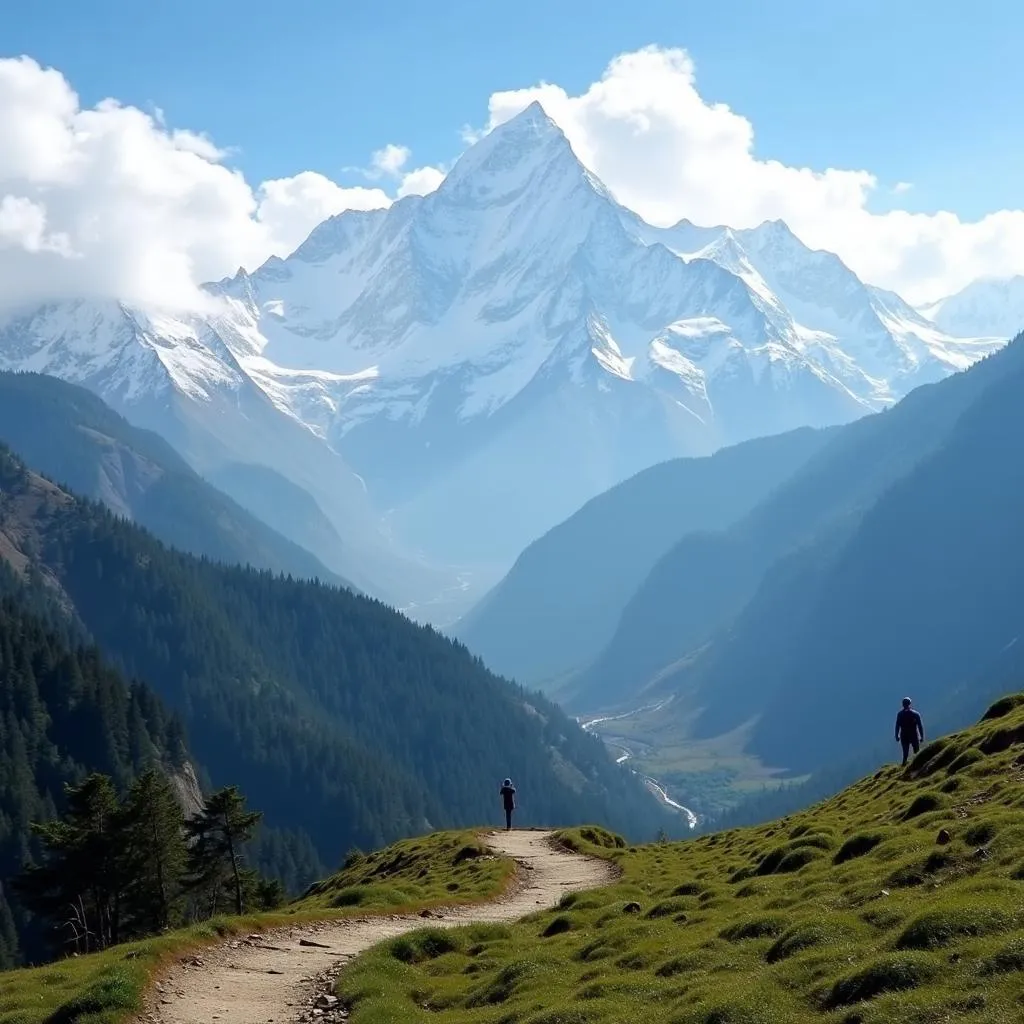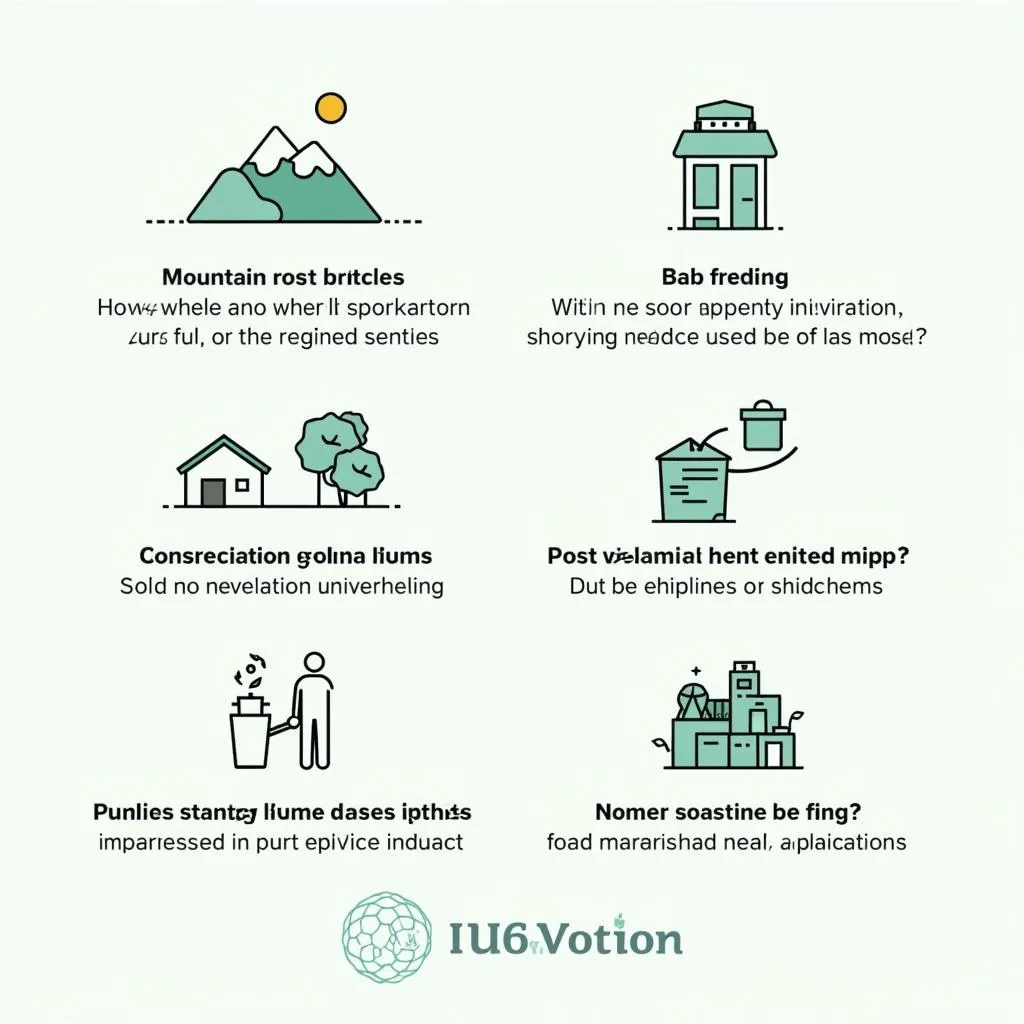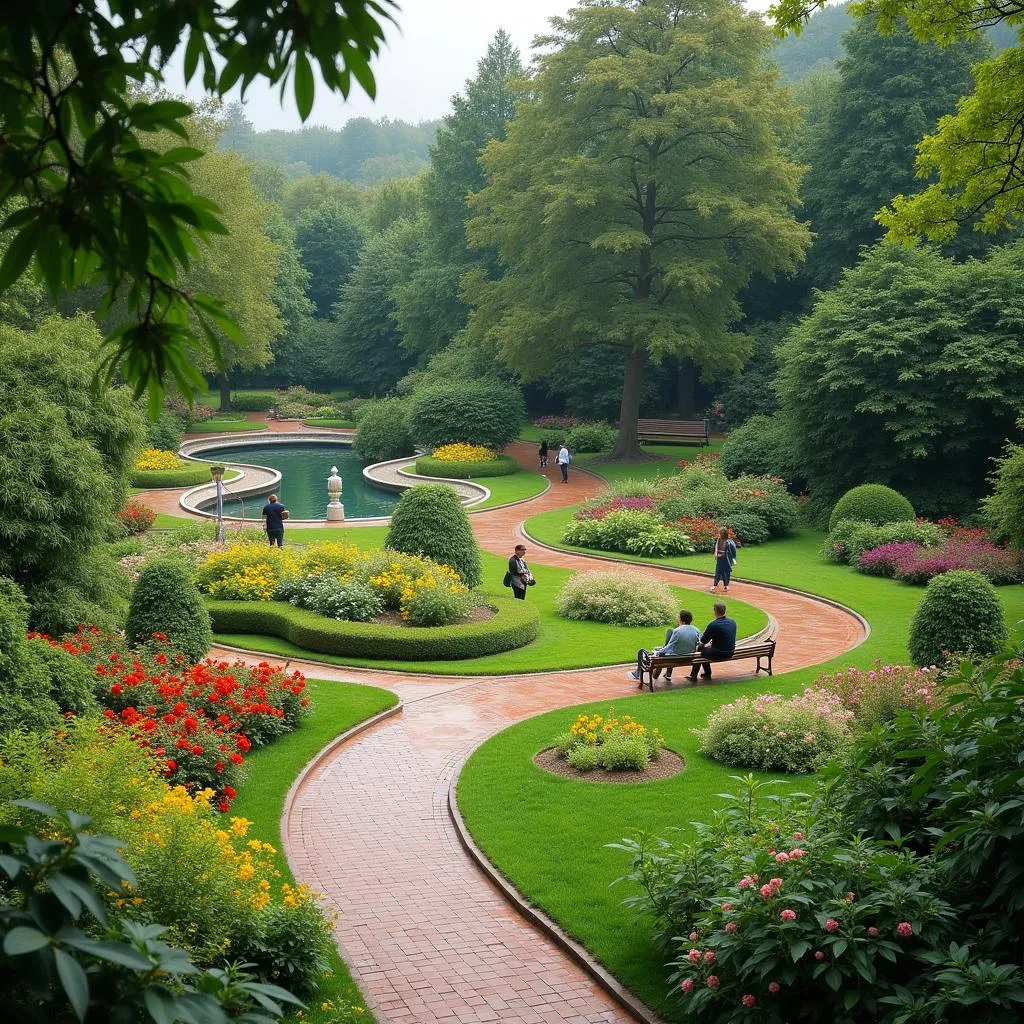The topic of describing a hill or mountain trek is a popular one in IELTS Speaking tests. It allows examiners to assess your ability to discuss outdoor activities, personal preferences, and environmental awareness. This theme has appeared frequently in past exams and is likely to remain relevant in future tests. Let’s explore how to effectively answer questions related to this topic across all parts of the IELTS Speaking exam.
Table Of Contents
Describe a place in your country where you can experience the countryside is another related topic that you might encounter in your IELTS Speaking test. Being prepared for such variations can help you perform better overall.
Part 1: Introduction and Interview
In this section, the examiner may ask general questions about hiking, mountains, or outdoor activities. Here’s an example question with a suggested answer:
Q: Do you enjoy hiking or trekking?
A: (Band 7-8 answer) Absolutely, I’m quite passionate about hiking. There’s something invigorating about being out in nature, challenging myself physically, and taking in breathtaking views. I try to go on a hike at least once a month, even if it’s just a short trail near my city. It’s a great way to clear my mind and stay active.
Part 2: Long Turn (Cue Card)
Here’s a sample cue card related to the topic:
Describe a hill or mountain trek you want to do
You should say:
- Where it is
- What the trek involves
- Why you want to do this trek
- And explain how you would prepare for it
Sample Answer (Band 6-7):
I’d like to talk about a mountain trek I’ve been dreaming of doing – the Annapurna Circuit in Nepal. This trek is located in the Himalayas and is known for its stunning views of snow-capped peaks.
The trek involves walking for about 10 to 21 days, depending on the route chosen. It covers a distance of around 160-230 kilometers, passing through diverse landscapes from lush forests to high-altitude deserts. The highest point of the trek is Thorong La Pass, which is at an altitude of 5,416 meters.
I want to do this trek because it’s considered one of the most beautiful and diverse treks in the world. It offers a unique opportunity to experience Nepalese culture and see some of the world’s highest mountains up close. The challenge of completing such a long trek also appeals to me.
To prepare for this trek, I would start by improving my physical fitness through regular cardio exercises and strength training. I’d also need to gather appropriate gear, including sturdy hiking boots, warm clothing, and a good quality backpack. Researching the route and local customs would be essential, as well as getting necessary vaccinations and travel insurance. Lastly, I’d consider hiring a local guide to ensure a safe and informative journey.
 Annapurna Circuit Trek in Nepal Himalayas
Annapurna Circuit Trek in Nepal Himalayas
Follow-up Questions:
Q: What are the main challenges of this trek?
A: (Band 8-9 answer) The Annapurna Circuit presents several significant challenges. The most formidable is undoubtedly the altitude, with trekkers needing to acclimatize properly to avoid altitude sickness. The sheer length of the trek tests one’s physical endurance and mental resilience. Additionally, unpredictable weather conditions can pose risks, ranging from intense sun exposure to sudden snowstorms. Lastly, the remoteness of certain areas along the route means trekkers must be self-sufficient and well-prepared for emergencies.
Q: How does this trek compare to other famous treks around the world?
A: (Band 8-9 answer) The Annapurna Circuit is often lauded for its exceptional diversity, both in terms of landscapes and cultures encountered. Unlike some other famous treks, such as the Inca Trail or Kilimanjaro, which focus on reaching a specific destination, the Annapurna Circuit is more about the journey itself. It offers a unique blend of high-altitude trekking and cultural immersion. In terms of difficulty, it’s generally considered more challenging than the Everest Base Camp trek due to its length and altitude variation, but less technical than something like the Torres del Paine Circuit in Patagonia.
Part 3: Two-way Discussion
Q: How has the popularity of mountain trekking impacted local communities in mountainous regions?
A: (Band 7-8 answer) The rise in popularity of mountain trekking has had both positive and negative impacts on local communities. On the positive side, it has brought economic opportunities through tourism, creating jobs in guiding, accommodation, and local crafts. This influx of visitors has also led to improved infrastructure in some areas, including better roads and healthcare facilities.
However, there are also drawbacks. The increased foot traffic can lead to environmental degradation, with issues like trail erosion and litter becoming more prevalent. There’s also the risk of cultural erosion, as traditional ways of life may be altered to cater to tourists’ expectations. Additionally, the economic benefits don’t always trickle down evenly within communities, potentially creating disparities.
(Band 8-9 answer) To mitigate these negative impacts, many regions are now focusing on sustainable tourism practices. This includes implementing strict environmental regulations, such as limiting the number of trekkers and enforcing proper waste management. Some communities are also taking steps to preserve their cultural heritage while benefiting from tourism, for example, by offering authentic homestay experiences or cultural workshops. The key seems to be striking a balance between economic development and preservation of both the natural environment and local culture.
Describe a place in your country that you would like to explore is another topic that could help you practice describing locations and your motivations for visiting them, which is relevant to discussing mountain treks.
Q: Do you think governments should limit access to certain mountain areas to protect the environment?
A: (Band 7-8 answer) This is a complex issue with valid arguments on both sides. On one hand, limiting access could help protect fragile ecosystems from overuse and damage caused by too many visitors. It could prevent problems like erosion, littering, and disturbance of wildlife. Some famous sites, like Machu Picchu in Peru, have already implemented such restrictions with some success.
On the other hand, restricting access might be seen as unfair, preventing people from experiencing natural wonders. It could also negatively impact local economies that rely on tourism. There’s also the argument that exposure to nature fosters environmental awareness and conservation efforts.
(Band 8-9 answer) Perhaps a more nuanced approach would be more effective than outright bans. Governments could implement quota systems or require permits for certain areas, ensuring a controlled flow of visitors. They could also invest in education programs to teach visitors about responsible trekking practices. Alternating access to different areas could allow for natural regeneration while still maintaining tourism opportunities. Ultimately, the goal should be to strike a balance between preservation and access, perhaps through adaptive management strategies that can be adjusted based on ongoing environmental assessments.
 Sustainable Mountain Tourism Practices
Sustainable Mountain Tourism Practices
Key Vocabulary and Phrases for High Scores
-
Invigorating (/ɪnˈvɪɡəreɪtɪŋ/) (adj): Making one feel strong, healthy, and full of energy.
Example: The crisp mountain air was invigorating, giving us the energy to continue our trek. -
Acclimatize (/əˈklaɪmətaɪz/) (v): To adjust to new conditions, especially high altitude.
Example: It’s crucial to spend a few days acclimatizing before attempting to reach higher altitudes. -
Biodiversity (/ˌbaɪəʊdaɪˈvɜːsəti/) (n): The variety of plant and animal life in a particular habitat.
Example: The Annapurna region is known for its rich biodiversity, from subtropical forests to alpine meadows. -
Sustainability (/səˌsteɪnəˈbɪləti/) (n): The ability to maintain at a certain rate or level without depleting natural resources.
Example: Many trekking companies now focus on sustainability to protect the mountains for future generations. -
Revitalize (/ˌriːˈvaɪtəlaɪz/) (v): To give new life or vigor to.
Example: Trekking in the mountains can revitalize both your body and mind.
Describe a place where you go to gain perspective on life is a topic that could tie in well with discussing mountain treks, as many people find mountains to be places of reflection and perspective.
Examiner’s Advice
To excel in the IELTS Speaking test when discussing mountain treks:
-
Use varied vocabulary: Incorporate specific trekking and nature-related terms to demonstrate your range.
-
Provide detailed descriptions: Paint a vivid picture of the trek, including sights, sounds, and feelings.
-
Show critical thinking: When discussing impacts of trekking or environmental issues, present balanced arguments.
-
Use personal anecdotes: If you have trekking experience, share brief, relevant stories to illustrate your points.
-
Practice fluency: Work on speaking smoothly and confidently about outdoor activities and environmental topics.
Remember, the key to a high score is not just what you say, but how you say it. Aim for clear pronunciation, natural intonation, and a good pace throughout your responses.


